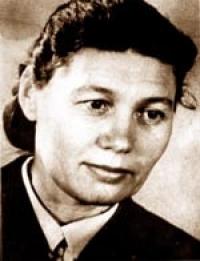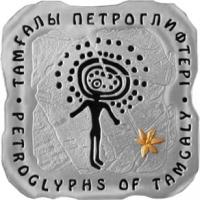You are here
History petroglyphs Tamgaly.


Kazakhstan petroglyphs tours.
"Both of these rivers, about 80 miles before reaching their mouths, flow into each other through capes, which are known under the names of the tracts: Bish Kulan and Tamgaly-Dzhar: all Kirghiz know these tracts; the first on the Chui River, for the graves and the Kulan-utkuli ritual, and the second along the steep bank adjacent to the Sary-Su on the left side, on which, since time immemorial, a stone has been kept with an image on it of up to 500 tamgas (seals) of the former inhabitants of the steppe"
Diary of A.I. Shrenk (1840 - 1843, No. 47 "Description of the southwestern part of the Hungry Steppe". Compiled at the General Staff of the Siberian Corps based on questions from Sergeant Lobanov in 1841). Archive of the St. Petersburg branch of the Russian Academy of Sciences.
Petroglyphs Tours to Central Asia and Kazakhstan.
The territory of modern Kazakhstan is the focus of a large number of monuments of ancient rock art. As a form of fine art, petroglyphs arose on the territory of Kazakhstan in ancient times. Many of the works of prehistoric artists have survived to this day, providing a unique opportunity to judge the culture, beliefs and customs of ancient tribes.
The first mention of rock paintings on the territory of Kazakhstan belongs to the famous medieval scientist of the XIth century, al-Biruni, who spoke about mysterious paintings in the country of the Kimaks, which served as an object of worship for the local population.
Much new information about Semirechye and Southern Kazakhstan - large areas where petroglyphs are concentrated - became known in the 19th century. In the 40s and 50s of the 20th century, a series of “art galleries” were opened in the east of Kazakhstan - in the mountains of Tarbagatai, Narym, Kalba, Monrak and Saur. Eastern Kazakhstan is literally strewn with rock paintings. However, no one seriously studied petroglyphs in these parts.
For the first time, petroglyphs on the rocks of the Tamgaly tract were discovered by photographer A. A. Popov from a group of scientific researchers led by the first professional archaeologist of Kazakhstan, Anna Georgievna Maksimova, on September 19, 1957.
Petroglyphs and other monuments of the Tamgaly Archaeological Complex were discovered by the Semirechensky detachment of the South Kazakhstan expedition of the Kazakh Academy of Sciences SSR under the leadership of Anna Georgievna Maximova.
The scientific expedition carried out excavations of ancient burial grounds of the Karakuduk tract of the Bronze Age. Over the next few days, A.G. Maksimova and A.A. Popov examined the main locations of Tamgaly petroglyphs and took photographs of the most valuable compositions.
Short entries from those days in the field diary of A.G. Maksimova convey a feeling of excitement and understanding of the discovery made. With the publication in 1958 of the first publication by A.G. Maximova’s “Rock Carvings of the Tamgaly valley” dates back to almost half a century of history of studying the monument.
In 1977 - 1978 the study of Tamgaly monuments was continued by other scientists under the leadership of A.G. Maksimova. For the first time, a comprehensive survey of the territory of Tamgaly was carried out, and a diagram of the location of the main accumulations of petroglyphs was drawn up.
By the end of the 1980s, thanks to the publication of a series of scientific articles and albums of rock paintings, Tamgaly became widely known and increasingly attracted the attention of domestic and foreign experts. In 1990 - 1994 Scientific research of Tamgaly monuments is becoming complex and developing in close connection with the tasks of conservation and conservation of petroglyphs.
The State Project “Conservation of Rock Art in the Tamgaly Tract” was approved, a database structure was developed, forms for field descriptions of petroglyphs were prepared, and more than 3,000 images were recorded. In general, the work done made it possible to further reveal and substantiate the cultural and historical significance of the petroglyphs of the Tamgaly complex.
Appeared in 1995 - 2001. The popularity of Tamgaly petroglyphs resulted in an uncontrolled flow of tourists, which became a real threat to the existence of the monuments.
Preservation of monument Tamgaly.
In 1998, with the assistance of the Ministry of Culture of Kazakhstan, the development of a comprehensive program for the study and preservation of Tamgaly began. In the same year, a rationale was prepared for the inclusion of the Tamgaly complex on the Tentative List of UNESCO World Heritage Sites for Kazakhstan.
In 1999, the UNESCO World Heritage Committee identified Tamgaly as one of the country's priority monuments for nomination in 2001-2002. In August 2001, the Prime Minister of Kazakhstan I. Tasmagambetov and the Director General of UNESCO K. Matsuura visited Tamgaly and highly appreciated the cultural significance of the monument and the efforts that Kazakh specialists, with the support of UNESCO, are making to preserve it.
On October 5, 2001, by a special resolution of the Government of the Republic of Kazakhstan, the Tamgaly archaeological complex received the status of a monument of republican significance. The boundaries of its security zone were determined. And on October 14, 2003, by special Government Decree No. 1052, under the Ministry of Culture of Kazakhstan, a State historical, cultural and natural reserve - Tamgaly Museum with a total area of 3.8 hectares. The monument complex includes burial grounds, petroglyphs, places of worship, which create a single sacred territory used by people for more than two thousand years.
In 2004, the petroglyphs of the archaeological landscape of Tamgaly were included in the UNESCO World Heritage List. The Tamgaly petroglyph gallery is a treasure of world significance and is protected by UNESCO. Since 2006, UNESCO has been actively involved in the fate of this monument and provides support for its conservation.
One of the 10 multimedia encyclopedias created by RGB-Studio LLP within the framework of the State Program “Cultural Heritage” and included in the “Collection of Multimedia Encyclopedias” is dedicated to the State Historical, Cultural and Natural Museum-Reserve “Tamgaly”.
Maksimova Anna Georgievna (12.29.923 - November 11.2002)
Born in Novokuznetsk. She graduated from the Faculty of History of Moscow State University in 1946 and was invited to work in the archeology department of the Institute of Atomic Energy of the Kazakh Academy of Sciences. SSR, where she worked until 1983.
In 1960 she defended her PhD thesis on the topic: “Eastern Kazakhstan in the Bronze Age.” Over the years of work at the IIAE she published about 40 scientific publications. She took part in major archaeological expeditions on the territory of the republic, including in the South Kazakhstan region: Otrar AE, SKKAE, she explored the Bronze Age burial ground of Tau-Tara, monuments of the flood zone of the Shardara reservoir.
Scientific works of Anna Georgievna Maximova:
1. Bronze Age burial ground in the Tau-Tary tract. Archaeological research on the northern slopes of Karatau. Proceedings of IIAE A.N. Kazakh SSR, Alma Ata, 1962, T.14, p. 37 - 56.
2. Funeral structures of pastoral tribes. Archaeological research on the northern slopes of Karatau. Proceedings of IIAE A.N. Kazakh SSR, Alma Ata, 1962, T.14, p. 97 - 109.
3. Antiquities of Chardara. Alma Ata, 1968. (co-authored with Mershiev M.S., Weinberg B.I., Levina L.M.)
4. Nausa-type tombs in the village of Chaga. In the depths of centuries. Alma Ata, 1974, p. 95 - 118.
5. Kurgan burial ground in the Kyzyl-Kainar tract. Searches and excavations in Kazakhstan. Alma Ata, 1972.
6. Kurums of the Karatau ridge. Archaeological research in Kazakhstan. Alma Ata, 1973.
Authority:
www.madenimura.kz In information are used materials of Institute of cultural policy and Art Studies of the Republic of Kazakhstan.







